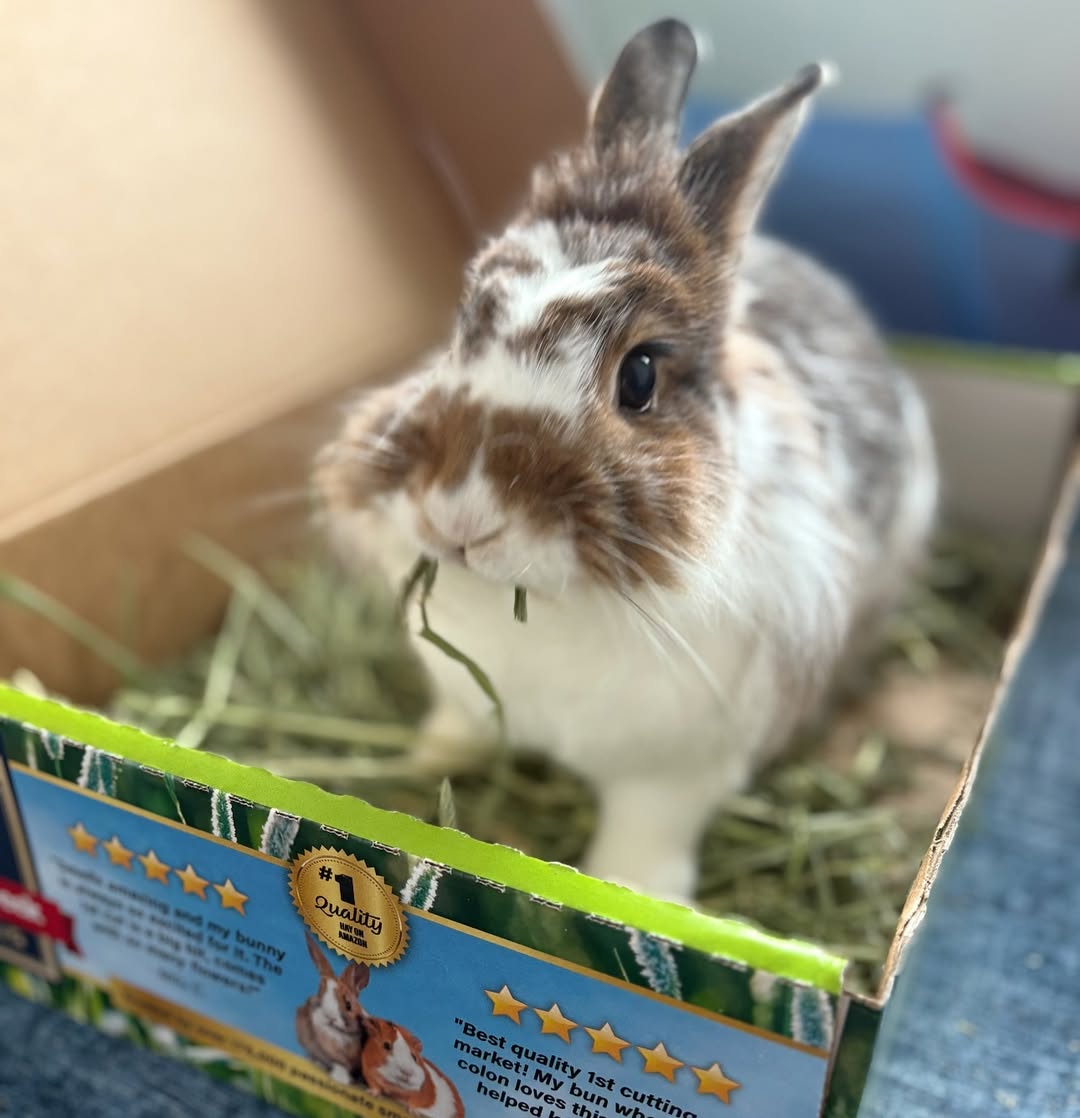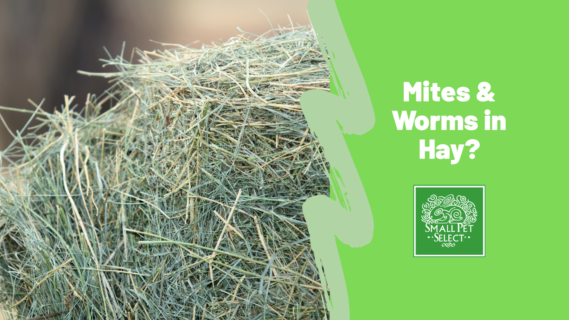Is it possible for your pet rabbit, guinea pig, chinchilla, etc. to get mites or worms from the hay it eats? The short answer is that it’s possible but fairly unlikely. For the longer answer, read on!
What are mites?
Mites are tiny (barely visible) eight-legged parasites similar to ticks or lice. One of the most common types of mites is Cheyletiella mites, which affect the surface of the skin of rabbits. Other types, such as varieties of Scabies mites, burrow under the skin of animals. Surface mites are usually not excessively itchy but can cause flaky skin, which looks like dandruff, and hair loss – and Cheyletiella mites can be transmitted to humans, causing an itchy rash.
Burrowing mites do cause excessive itching in animals, in addition to sores, scabs, and often bacterial infection. There are also ear mites, which can cause very painful sores and crusting of the ears. The main ways mites are transmitted are from animal to animal (or human), like from one household pet to another, and from objects animals touch, such as bedding and toys.
What are worms?
The most common type of parasitic worm that small animals get is the pinworm, although roundworms and tapeworms are also possible. Worms infest the gastrointestinal tract of mammals and can cause soft stools or diarrhea and intense itching of rear ends. In order to get infested by worms, an animal has to ingest fecal material (poop), even just a tiny bit, that contains worms or worm eggs. So, for example, if your critter is playing on grass where an animal with worms has pooped and then your critter eats some of the grass, worms can infest your critter. Or, if your pet dog or cat has worms and your critter steps in some of its feces and then licks its feet, your critter can get those worms. I know, yuck.
Infested hay
It is pretty rare for pets to get mites from hay, and even rarer for them to get worms from hay – as long as the hay is from a well-known, reputable supplier. Good hay companies inspect hay and perform quality checks, and they also store and bag hay according to high standards. So it’s not very likely that their hay would be contaminated. On the other hand, if you get your hay from a farm or a supplier that isn’t well-known, the hay is more likely to be contaminated due to low standards of storage or it may not be checked as well for quality.
If you are concerned about parasites in your hay, freezing it for at least 24 hours before storage in your home and before feeding to your critters can kill the parasites. And as a side note, meadow grass is a little more likely to have mites than other types of grasses and hay. It grows more densely than other types, which allows mites to “shelter” within the grass. However, again, if you buy your meadow grass from a quality place, mites are still rare.
Preventing mite and worm infestation
Purchasing quality hay and food from well-known, reputable suppliers is therefore one way to help prevent getting worms or mites. The main way, though, is to keep your pet’s environment clean. Urine and feces can attract parasites. Also, as talked about, if feces contain worms, your pet can become infested just by licking its paws. Also, look over your pet really well once a week. If you notice any loss of fur, dandruff, sores, or scabs, get your pet checked out by your veterinarian.

@oliviaandolly
Treatment for mites and worms
Your veterinarian can diagnose an infestation and prescribe your critter medicine for it. The usual treatment for skin mites is either oral ivermectin or topical selamectin (never fipronil; it is toxic to critters!). Your vet will tell you the amount to give and how many times to give it (mites typically need several treatments). If your critter has ear mites, treatment often involves removing the crusts and cleaning the ears while under anesthesia. (Never remove ear crusts yourself; this is a very painful procedure that your critter should not be awake for.)
For worms, the medication depends on the type of worm, so it’s important to have this diagnosed properly. Treatment usually involves an oral medication given several times.
And, of course, treatment involves cleaning your critter’s environment. Cloth items should either be thrown away or washed in hot water and changed every day. Cardboard and wood should be thrown away. Hard items such as cages, litterboxes, bowls, and toys should be cleaned and sanitized daily. Litter should be changed every day until treatment is over.
Fleas and ticks
A quick mention about fleas and ticks, which are two other types of external parasites that can affect rabbits, especially if rabbits are ever let outside. Both of these parasites carry diseases that can be harmful to pets, so if you notice these – tiny black fast-moving dots (fleas) or very small round brown, red, or black scab-like bumps (ticks) – you should take your pet to your veterinarian.
Copyright 2025 Amy “Brem” Bremers, DVM





